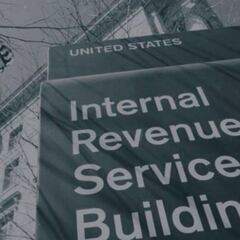What is the difference between a flat tax rate and a progressive tax rate?
The United States deploys a progressive tax rate system. How does this approach differ from a flat tax rate?


Tax season is here! Starting on Monday, 29 January, the IRS will begin processing returns. Those hoping to get their return as soon as possible can submit it, and when processing begins, they will find themselves at the top of the queue for disbursal of returns.
In previous years, some individuals had to amend their tax returns between January and April due to changes in the tax code that allowed them to receive larger returns. However, with the current divided Congress, it is unlikely that any significant changes will occur, reducing the risk of making corrections for those who file their returns early.
Kansas proposes a flat tax rate
While there are no expected changes at the federal level, the Kansas legislature is considering a bill proposing a flat tax rate system in the state. The state’s Republican party favors this change, but if it is adopted, it will likely be vetoed by the Democratic governor, Laura Kelly. A flat tax rate system means that everyone, regardless of their income, will be taxed at the same rate. This differs from the progressive taxation method, which applies a lower tax rate to those with lower incomes.
What states have a flat tax?
- Arizona - 2.5%
- Colorado - 4.4%
- Idaho - 5.8%
- Illinois - 4.95%
- Indiana - 4.95%
- Kentucky - 4.5%
- Michigan - 4.25%
- Mississippi - 5%
- New Hampshire - 4%
- North Carolina 4.75%
- Pennsylvania - 3.07%
- Utah - 4.85%
- Washington - 7% [only applies to income that comes from capital gains]
The Kansas proposal would cap the tax rate at 5.25 percent, excluding any person with an income under $6,150 single tax files and $12,300 for those who file jointly. At 5.25 percent, Kansas would have the highest rate of any state that has opted for a single-rate system. The bill would also make Kansas the most recent state to eliminate taxes on Social Security benefits, joining thirty-nine states and the District of Colombia that have similar rules on the books. Though there are elements that Democrats have negotiated into the bill, the veto is likely to come because adopting a flat tax would reduce the state’s revenue. The Kansas City Star reported on research conducted by the legislature that found that in the first year, the state could lose more than $435 in revenue and that in the following years, that figure could rise to more than half a billion dollars. These cuts would represent around two percent of the state’s 2022 budget.
Related stories
As mentioned above, the US Internal Revanue Services taxes income progressively, meaning that lower incomes are taxed at a lower rate. This year, the tax rates look like this at the federal level:
2023 tax rates for single taxpayers
| Tax Rate | Income Range |
| 10% | $0 - $10,275 |
| 12% | $10,276 - $41,775 |
| 22% | $41,776 - $89,075 |
| 24% | $89,076 - $170,050 |
| 32% | $171,051 - $ $215,590 |
| 35% | $215,591 - $539,900 |
| 37% |
$539,901+ |
Each year, these brackets are adjusted slightly to account for inflation and other economic variables.

